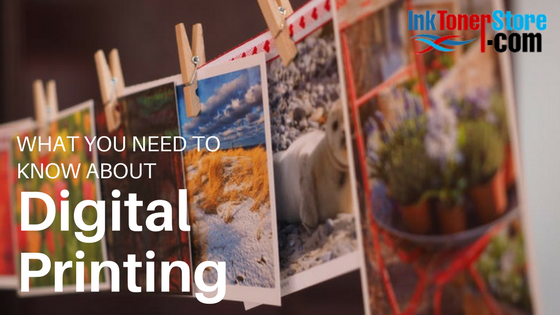Personal computers in small offices and homes necessitated a printing method that could be done directly from these devices. Digital printing has become the preferred (perhaps the only
remaining) method for printing office documents for different purposes. Unlike other printing
techniques that require preparing plates, screens and other aids, digital printing allows quick
editing and printing of what is on an electronic device. Modern printers can even print
directly from USB flash sticks without a PC.
What is digital printing?
Simply put, digital printing is where the image is transferred directly to the printing surface.
This can be paper, plastic, fabric, glass and even ceramic. This is unlike traditional printing
which required preparing a plate or stencil.
Digital printing is usually preferred for paper sizes up to A3. This is because, in large sizes, it
becomes fairly expensive eroding the gains of the faster printing times.
There are two main types of digital printing
• Inkjet printing – A nozzle sprays ink onto the printing surface
• Laser printing – A laser negatively charges a drum which then attracts toner on the
charged parts
Digital printing has some defining characteristics:
• Sheet size – Most digital presses will be able to print up to A3. The Xerox Igen is one of
the few printers that can take larger sizes than this, at 660 x 430 mm sizes.
• Paper – Different paper brings out print differently because of the different water content
and surface texture. The paper that brings out photos well, works out differently for text.
• Printing quality – Digital printing works best for grayscale, black and white text and
graphics. Large images in solid color do not come out very well in digital printing especially
when done on plain paper as they come out over-saturated.
• Finishing – Some types of finishing are tricky to do in digital printing. Laminates and
foils, for example, do not adhere very well to the toner.
What are the advantages of digital printing?
• Fast – Print-on- demand jobs are fast to do. Small runs are easy to prepare and economical.
• Cheaper – Digital printing is cheaper for home and offices printing as there are no plates
or stencils to prepare.
• Easy to operate – Digital printing is easy to set up as many digital printers are plug-n- play.
WYSIWYG editing also makes it easy to make changes to printing jobs quickly, or have
different variations in a short time.
There is no file preparation as printing can be done from different graphics design, word
processing, and document viewing programs.
What type of printing do you do, and what printer kind of do you own?


